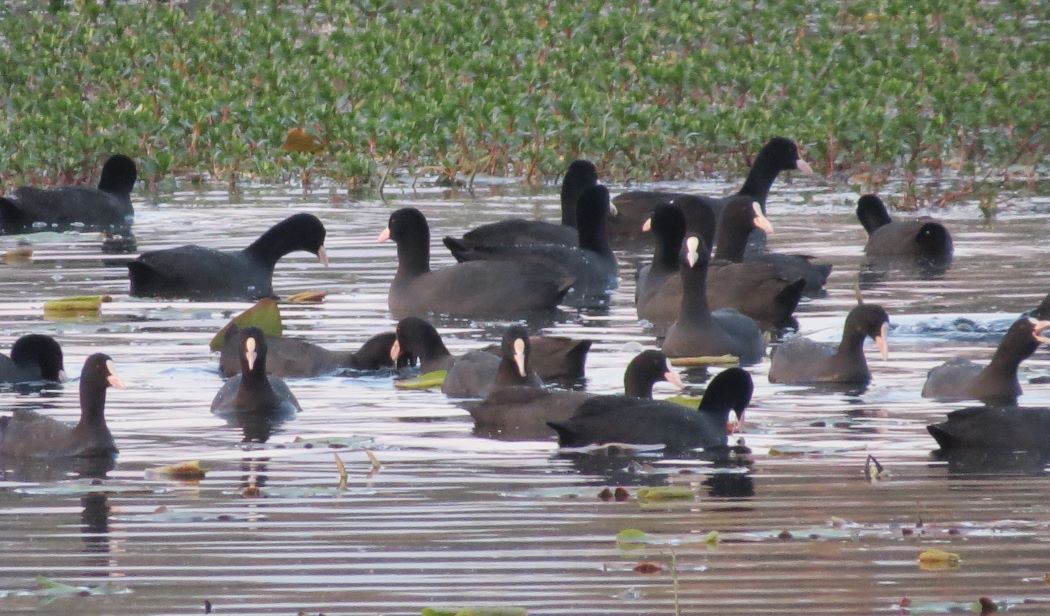
Jan. 21: According to statistics from a water bird count conducted by a group of ornithologists in the Ghodaghodi area, the bird population has increased this year compared to last year.
The winter water bird count for this year is concluded on Tuesday, and the Ghodaghodi Ramsar (wetland) area in Kailali, which stands as the first bird sanctuary saw a surge in the number of water birds.
An ornithologist and field manager of Bird Conservation Nepal Hirulal Dangaura reported that this year, 1,231 waterbirds were counted in and around Ghodaghodi. In contrast, only 855 water birds were counted last year, indicating a significant increase in the number of birds this year.
There are 70 species of waterbirds among the birds found in the Ghodaghodi wetland. Ornithologists have identified the change in the number of birds as the main reason for the alteration in the ecological system in the area.
In last year's count, 17 species of water birds were found, but this year, the count has increased to 36 species. Out of these 36 species, 13, including the Lesser Whistling-duck, Chinese Spot-billed Duck, Common Moorhen, and Bronze-winged Jacana, belong to indigenous species.
According to the ornithologists, in 2003, it was discovered that there were 20,000 waterbirds in the Ghodaghodi area, leading to its listing in Ramsar in that year. However, over two decades, the bird population in Ghodaghodi decreased to 1,231.
Overall, it has been observed that the number of waterbirds has decreased in the Ghodaghodi wetlands over two decades. The submitted government report, in the year the Ghodaghodi area was listed in Ramsar, indicated the presence of 20,000 water birds in this area.
The ornithologist highlighted that among the birds exclusive to Nepal, the Cotton Pygmy-goose, Common Moorhen, White-breasted Waterhen, and Chinese Spot-billed Duck breed in the wetland. The counting of water birds began in 1987 in the wetland area. According to the annual census, the report indicates that the situation of waterfowl is currently facing a crisis.
According to the ornithologist participating in the annual census, the African Comb Duck has not been sighted since 2018. Ornithologist Dangoura reported that among the visitors, several duck species including Common Pochard, Common Teal, Red-crested Pochard, Gadwall, and Mallard were absent compared to the previous year.
Additionally, he said that the Northern Pintail has not been observed in the Ghodaghodi wetland since 2014. The number of Common Coot, which typically arrives as a guest bird, has decreased compared to the previous year.
As soon as snowfall commences in the North Pole, birds in that region initiate their migration. Winter visitors from China, Russia, and Mongolia, as well as from Europe, Korea, and the Tibetan region, migrate to Nepal. Similarly, birds from Turkmenistan, Kazakhstan, and Siberia in Central Asia also travel here in search of food.
More than 150 species of birds are recorded to migrate to Nepal during the winter. They come to escape the harsh winter conditions that pose challenges to their diet and food sources. Ornithologist Dangaura informed that these birds typically begin arriving in the last week of September and return in March.
Bird Conservation Nepal has reported records of 380 bird species in Ghodaghodi, encompassing water birds, forest birds, grassland birds, as well as those residing in farmlands and open spaces. According to Dangoura, 17 conservationists took part in the water bird count in Kailali, led by Bird Conservation Nepal, Division Forest Office Pahalmanpur, and Bird Conservation Network.












